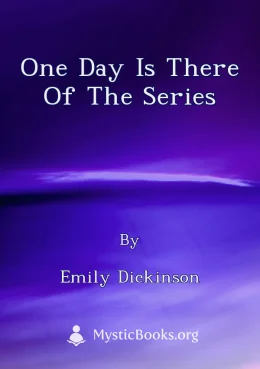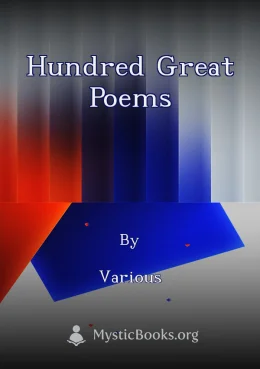
Dirge for the Year
'Dirge for the Year' Summary
In Percy Bysshe Shelley's evocative poem, Dirge for the Year, the passing of the year is not merely a seasonal change but a poignant moment of farewell and anticipation. Shelley weaves a tapestry of vivid imagery, emotions, and symbolism to invite readers to contemplate the cyclical nature of life, the beauty of impermanence, and the enduring power of hope.
The poem begins with the personification of the year as a dying mother. The orphaned hours, in a symbolic representation of time and the passing of moments, gather around her, watching her peaceful slumber. The image of the hours' tears, combined with the sighs of those who cherish the memories the year held, creates a sense of deep mourning and loss.
Despite the sorrow that permeates the poem, there lies an undercurrent of hope for renewal and rebirth. Shelley skillfully contrasts the imagery of the harsh winter months with the promise of spring's return. The bleakness of January and the grief-filled howling of March are juxtaposed with the tears of April and the fairest flowers of May. This contrast highlights the cyclic nature of life and suggests that the year's passing is not an end but a transformation.
The symbolism of the poem deepens with the image of the year's shroud. This shroud, often associated with death and mourning, is transformed into a symbol of protection and rebirth. It signifies the year's peaceful slumber and its eventual awakening in a new season of life.
Shelley masterfully utilizes the personification of the hours to convey the relentless march of time. These hours, with their constant vigil, are a constant reminder of the fleeting nature of moments. However, instead of emphasizing the brevity of life, the hours' presence offers comfort and solace. They serve as faithful guardians of the year's memories and ensure its legacy lives on.
In the concluding stanza, Shelley's imagery shifts to focus on the future and the promise of renewal. The year's sleep, once seen as a symbol of death, is now transformed into a prelude to a new awakening. The sleeping mother, once the object of mourning, is now the embodiment of hope and rebirth. Shelley's poem suggests that the passing of the year is not a loss but an opportunity for transformation, growth, and new beginnings.
Dirge for the Year is more than a poetic lament for the passing of a season; it is a profound meditation on the cyclical nature of life, the beauty of impermanence, and the enduring power of hope. Shelley's evocative imagery and symbolism invite readers to contemplate the interconnectedness of life and death, the fleeting nature of moments, and the promise of renewal that lies in every ending. Through the poem's poignant portrayal of the year's passing, Shelley reminds us that even in the face of loss, there exists the potential for growth and transformation, a promise that life's cycle will continue to bring new beginnings.
Book Details
Authors

Percy Bysshe Shelley
English
Shelley's work was not widely read in his lifetime outside a small circle of friends, poets and critics. Most of his poetry, drama and fiction was published in editions of 250 copies which generally s...
Books by Percy Bysshe ShelleyDownload eBooks
Listen/Download Audiobook
- Select Speed
Related books

Young Adventure, A Book of Poems by Stephen Vincent Benet
It was a line of Benet's poetry that gave the title to Dee Brown's famous history of the destruction of Native American tribes by the United States: B...

White Doe of Rylstone by William Wordsworth
Set against the backdrop of the Northern Rebellion of 1569, William Wordsworth's 'The White Doe of Rylstone' tells the tragic tale of a Catholic famil...

A Song To Eleonora Duse In "Francesca da Rimini " by Sara Teasdale
In the realm of theater, where emotions reign supreme and passion takes center stage, Eleonora Duse, the Italian actress, captivated audiences with he...

Man Carrying Bale by Harold Monro
Feel the weight of the bale on the porter's shoulders, and the rhythm of his steps, as Harold Monro's poem "Man Carrying Bale" brings to life the simp...

Spirits in Bondage: a cycle of lyrics by C. S. Lewis
Spirits in Bondage: A Cycle of Lyrics (1919) was C. S. Lewis's first published work (originally published under the pseudonym Clive Hamilton, which is...

One day is there of the series by Emily Dickinson
LibriVox volunteers bring you 6 different recordings of One day is there of the series by Emily Dickinson. This was the weekly poetry project for the...

Songs of the Outlands: Ballads of the Hoboes and Other Verse by Henry Herbert Knibbs
This collection of poems by Henry Herbert Knibbs captures the lives and experiences of hobos and other outcasts during the early 20th century. Through...

The Bibliomaniac's Bride by Eugene Field
The poem tells the story of a bibliomaniac, or book lover, who is obsessed with collecting rare and valuable books. He falls in love with a woman who...

Verses by Susan Coolidge
This volume of verse by Susan Coolidge, the pen name of Sarah Chauncey Woolsey, offers a collection of poems that touch upon a range of themes. The po...

Hundred Great Poems by Various
This book is a compilation of 100 poems from a diverse range of poets, providing a wide-ranging selection of poetic styles and themes. The poems cover...
Reviews for Dirge for the Year
No reviews posted or approved, yet...